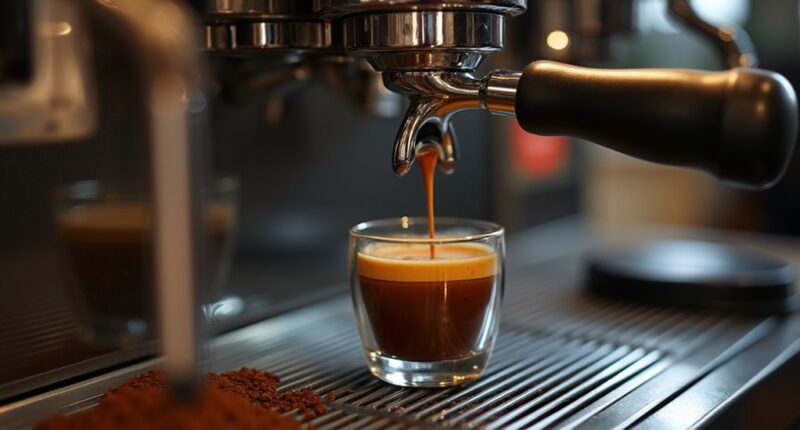If your espresso’s pulling too fast, you might need to adjust a few things. First, check your grind size; if it’s too fine, it’ll brew quicker than you can say “caffeine boost.” Freshness is key, too—beans over two weeks old can taste sad. And don’t forget tamping; uneven pressure can ruin your shot. Finally, look out for equipment issues. Stick around, and you’ll discover more tips to perfect that espresso shot like a pro!
At a Glance
- Finer grind sizes lead to quicker extraction; adjust your grind to slow down the pull for balanced flavors.
- Using stale or old coffee beans can cause flat or bitter flavors, affecting extraction speed.
- Inconsistent tamping pressure or uneven distribution of grounds can result in faster pulls; ensure level tamping for even extraction.
- Equipment issues like worn-out pumps or scale buildup may lead to excessive water flow, causing quick pulls; regular maintenance is crucial.
- Ensure you’re using the correct dose of coffee, typically 18-20 grams for a double shot, and maintain proper brew ratios for best results.
Understanding Grind Size and Its Impact on Extraction
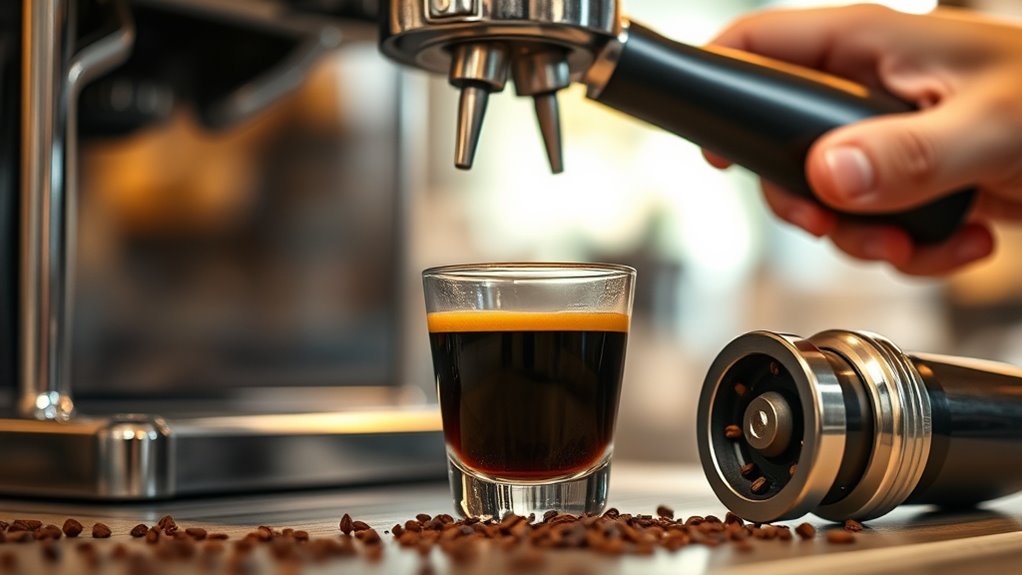
When it comes to brewing the perfect espresso, understanding grind size is like opening a secret door to flavor town!
You see, the grind size can totally make or break your cup. Finer grinds mean quicker extraction, while coarser ones take their sweet time. If your espresso’s pulling too fast, it’s likely time for some grind adjustments.
Aim for that sweet extraction balance, where flavors shine without bitterness. Play around with different sizes—you might just discover your new favorite. Additionally, using the right coffee grinder type can greatly influence your grind consistency and overall brew quality.
The Role of Coffee Freshness in Espresso Quality
If you’ve ever sipped a cup of espresso that left you wondering what went wrong, coffee freshness could be the sneaky culprit!
Fresh beans are key to that rich, vibrant flavor we crave. When beans sit around too long, they experience flavour degradation, losing their sweetness and complexity.
Ideally, you want to use them within 8 to 14 days of roasting for the best taste. If they’re older, your espresso might taste flat or even bitter. Additionally, ground coffee freshness significantly influences the extraction process, impacting the overall flavor profile of your espresso.
Importance of Tamping Techniques for Even Extraction
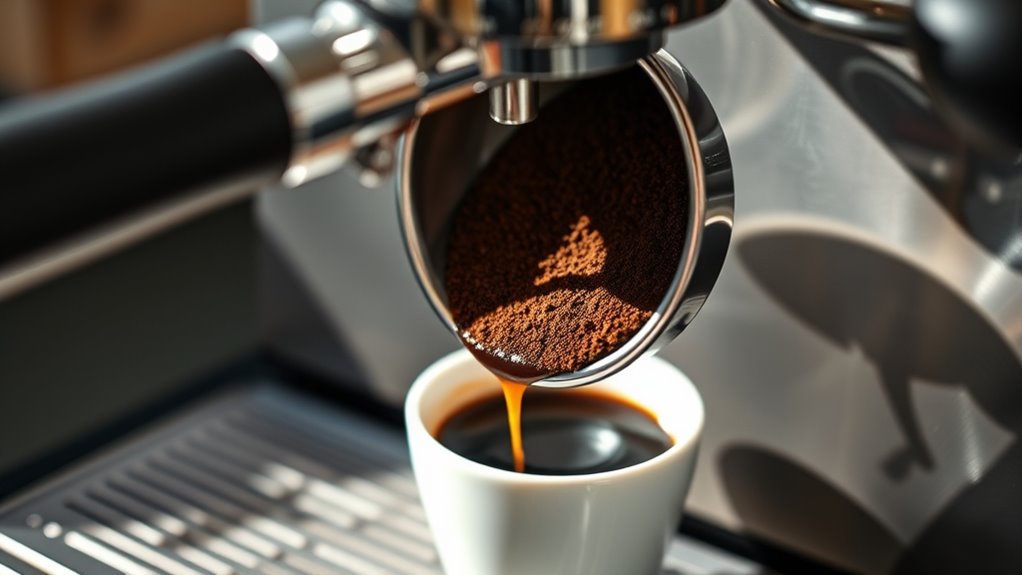
Tamping techniques are like the secret handshake of the espresso world—master them, and you reveal a whole new level of flavor!
To get that perfect shot, keep these in mind:
- Level it up: A level tamp avoids uneven extraction and those pesky fast pulls.
- Pressure’s key: Apply consistent tamping pressure; too much or too little can mess with your espresso.
- Distribution matters: Evenly spread your grounds first; a smooth, compact puck ensures water flows just right.
With good tamping consistency, you’re on your way to crafting espresso that brings everyone together—just like a cozy coffee shop! Additionally, finding the perfect espresso machine can significantly enhance your brewing experience.
Common Equipment Issues That Affect Espresso Flow
Espresso-making can feel like a science experiment at times, and equipment issues are those pesky variables that can throw off your perfect brew.
If your espresso pulls too fast, it might be pump maintenance or scale prevention that you need to focus on. Worn-out pumps can’t deliver pressure consistently, while scale buildup can block water flow, creating chaos.
Don’t forget about that overpressure valve; if it’s stuck, your espresso will gush like a waterfall! Regular descaling and checking your pump can save you from watery shots. Additionally, ensuring your machine has the right pressure settings is crucial for achieving a balanced extraction.
Adjusting Coffee Dose for Optimal Extraction Times
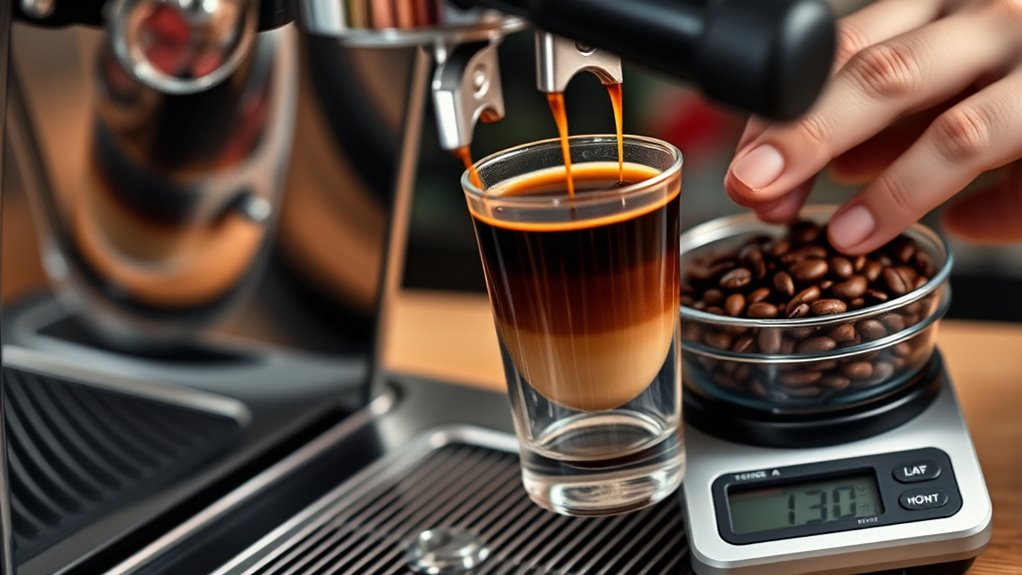
When you’re trying to make that perfect cup of espresso, getting the coffee dose just right is a game changer.
Here’s how to nail those dose adjustments for ideal flavor:
Nail your dose adjustments for espresso by fine-tuning for that perfect flavor balance!
- Start with 18-20 grams for a double shot—it’s the sweet spot!
- Adjust your grind size to match any dose changes; a little tweak goes a long way.
- Keep brew ratios in balance; aim for 1:2 for consistency.
Additionally, using high-quality Colombian coffee beans can significantly enhance the flavor profile of your espresso.
Monitoring Water Temperature and Pressure Settings
How do you know if your espresso is pulling just right? Well, it’s all about those temperature fluctuations and pressure variations!
Ideally, your water should be between 92°C and 96°C—too hot or too cold, and your espresso might taste like a sad cup of disappointment. The quality of the water used can greatly affect the extraction process and overall flavor profile of your espresso.
Keep an eye on the pressure too; about 9 bars is your best friend. If the pressure’s off, you might get a shot that’s way too fast.
Trust me, keeping those settings in check is the secret sauce to a delicious, smooth espresso.
Troubleshooting Tips for Fast Espresso Extraction
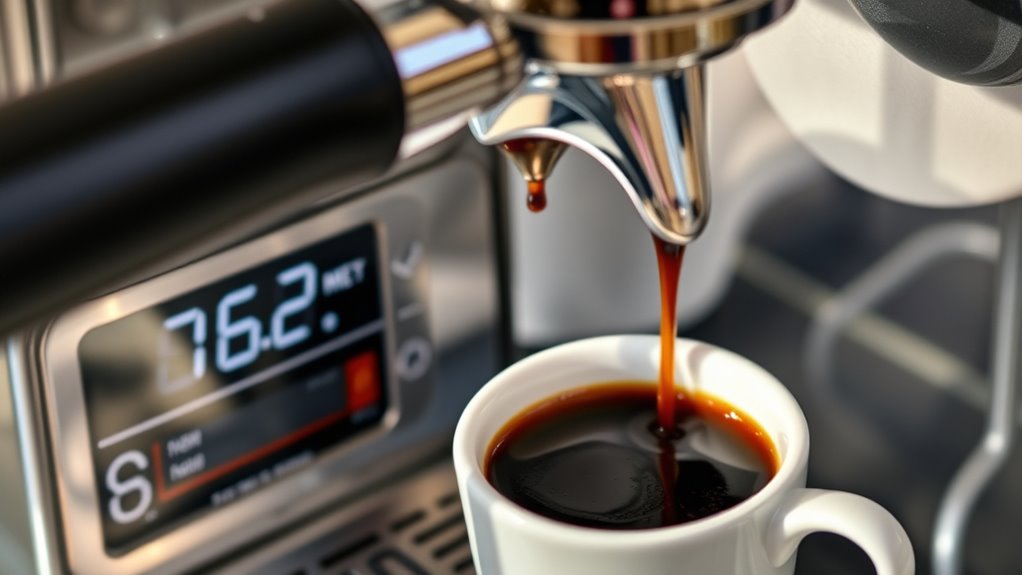
So, you’ve got your water temperature and pressure down, but your espresso still zips through the portafilter like it’s late for a coffee date?
Don’t worry, you can fix this! Here are some quick troubleshooting tips to help you nail that espresso consistency:
- Grind Size: Make sure your grinder calibration is spot on; a finer grind slows things down.
- Tamping: Apply even pressure when tamping, about 30 lbs, to compact that puck.
- Coffee Dose: Weigh your coffee precisely; under-dosing leads to faster extraction.
Additionally, ensure that your automatic espresso machine is properly maintained, as this can also impact extraction times.
With a little adjustment, you’ll be sipping that perfect shot in no time!
